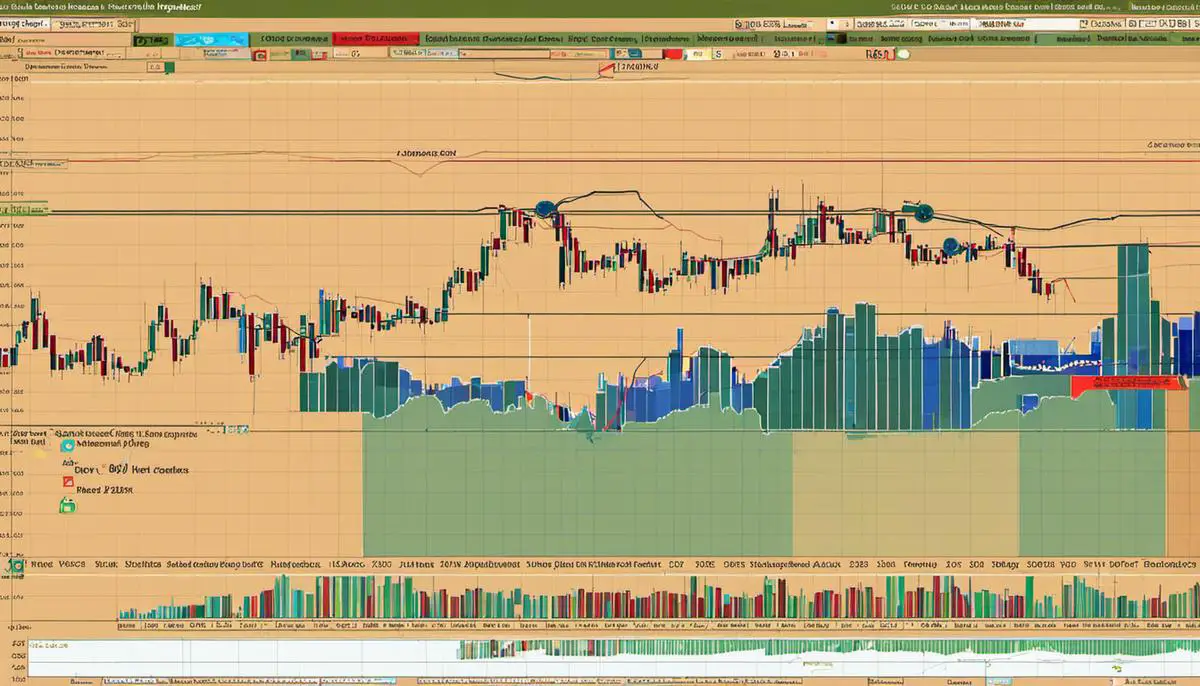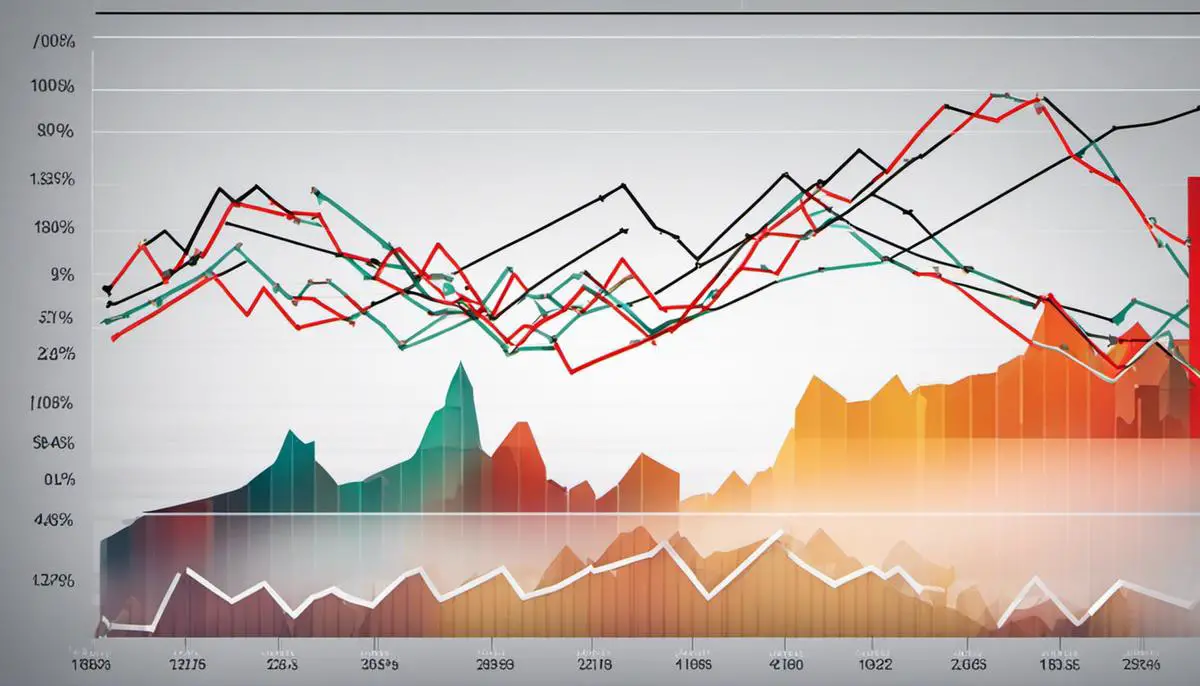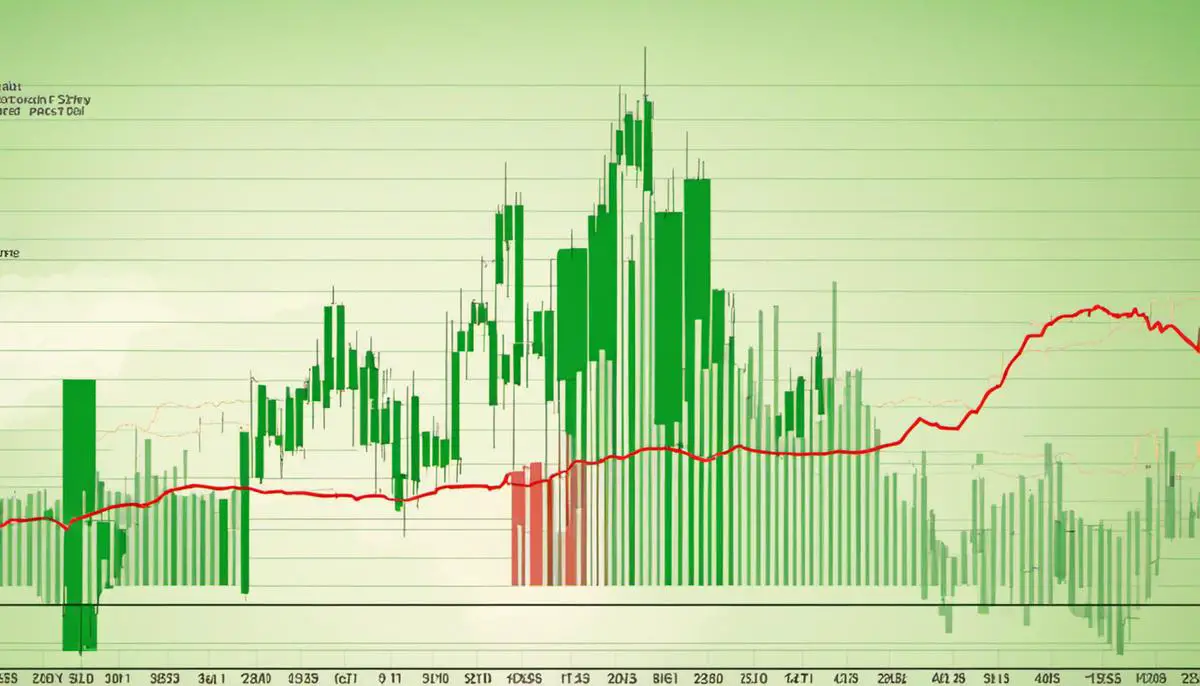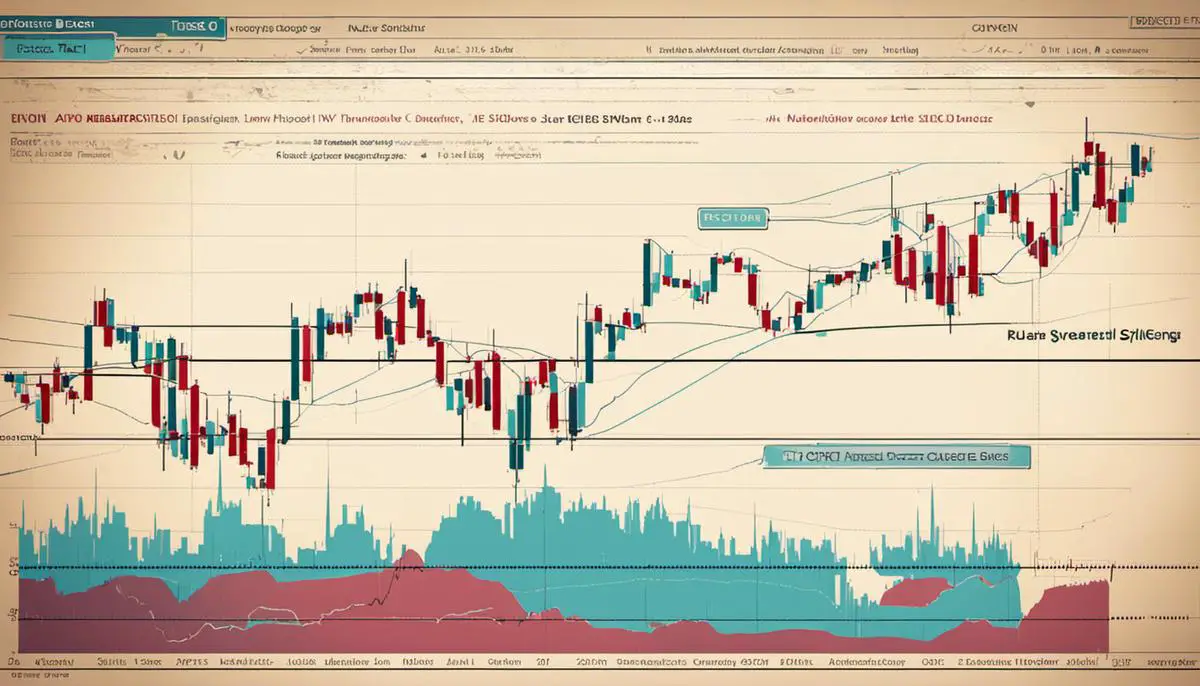Financial trading is abound with intricate strategies and complex algorithms, leveraging a diverse set of indicators to predict market trends. Among them lies the often underestimated, yet extraordinarily impactful, the Volume Moving Average (VMA) Indicator. This essential tool holds the power to decode market patterns by syncing volume changes with price movements, providing invaluable insights for informed, savvy trading decisions. The ensuing discourse delves into the fundamental science behind the VMA, its seamless integration into a trading system, tactics for optimisation, and an honest account of its limitations.
Understanding the VMA Indicator
The Volatility Market Adjustment (VMA) Indicator: A Crucial Tool in Financial Trading
In today’s fast-paced global financial market, sifting through noise to find nuggets of solid investment strategy can appear to be a daunting task. Among the myriad advanced trading tools, there exists one that continues to gain prominence in its effectiveness and relevance – the Volatility Market Adjustment (VMA) indicator. This exceptional tool is becoming indispensable in the realm of financial trading due to its capacity to offer unique insights, enabling savvy traders to make judicious decisions.
Before delving into the details about its importance, it is crucial to understand what the VMA indicator is. Essentially, the VMA or Volume Adjusted Moving Average is a type of moving average that adjusts its length based on market volatility. This dynamic nature of VMA allows it to perform better than the standard Moving Average during periods of significant market movement.
Traditionally, the Moving Averages are static and fail to account for volatility. This limitation is where the VMA disrupts the status quo. The genius behind the VMA is that it does not treat all periods alike; instead, it acknowledges that highly volatile periods necessitate a more responsive moving average.
Now, why is the VMA indicator becoming indispensable in financial trading?
The first striking quality that makes the VMA significant is its unparalleled ability to gauge market volatility. As business dynamics are increasingly becoming unpredictable, the VMA, with its adaptable nature, serves as a safe harbour for traders amidst tumultuous market conditions.
Secondly, VMA’s sensitivity towards volatility offers traders an upper hand in learning about price trends much quicker than their counterparts using simple Moving Averages. This early knowledge can be the difference between substantial profit and cataclysmic lose, emphasising the unmatched importance of VMA in a bustling financial market.
Thirdly, the VMA indicator’s capability of adapting quicker than the standard Moving Average provides the trader with a better signal line – a vital tool in understanding when to carry out a buy or sell action. By adjusting faster, it minimises the lag and generates more accurate signals for trade activities conducive to profitable decisions.
Finally, the VMA’s prowess lies in successfully determining the momentum of all assets, making it a versatile tool at home in any market – equities, commodities or forex. This broad applicability provides traders with a dependable resource to strengthen their trading trajectories across diverse markets.
To conclude, the Volatility Market Adjustment (VMA) indicator’s real power lies in its adaptability, speed, and applicability. These unique attributes render it indispensable in the volatile storms of financial trading. Armed with such a versatile tool, traders are well-equipped to navigate through uncertainties, aligning their decisions more effectively with the market’s violent throws. Hence, the game-changing VMA truly emulates the saying “Knowledge is Power” in the world of financial trading.

Implementation of the VMA Indicator
Harnessing the Power of VMA: Practical Usage Strategies and Crucial Insights
Diving deeper into the realm of the Volatility Market Adjustment (VMA) indicator, there are essential facets and practical strategies this tool bestows upon its users that necessitate examination. Beyond the established familiarity with its volatility sensitivity and trading signal provision, the VMA’s utility within various market scenarios lays the foundation for astute trading decisions.
Through the lens of seasoned investors, the superiority of the VMA indicator becomes evident in its adaptation to the dynamic ebb and flow of trading markets. To maximise its benefits, strategic selection of the VMA length is crucial, adjusted according to the market volatility. Smaller lengths respond faster to volatility changes ensuring swift action, whilst longer lengths offer stability in tumultuous markets, eliminating the risk of false signals.
The calibration of the VMA indicator allows for the visualisation of data trends more distinctly. Foremost, one can utilise the VMA within a crossover trading system. In this practical scenario, a short-term VMA crossing above a long-term VMA could be perceived as bullish, prompting an opportune moment to enter a new long position. Equally, a short-term VMA below the long-term VMA may indicate a potential selling point.
Furthermore, by exploiting the VMA’s significant sensitivity to market conditions, innovation in portfolio risk management processes is feasible. The VMA’s volatility adjustment allows investors to monitor market fluctuations, thereby adjusting trading strategies accordingly to lessen potential financial losses.
Remarkably, the VMA provides an innovative twist on traditional moving averages, offered not only by identifying quick market changes, but also through the calculation of adequate entry and exit points. A crucial insight to consider is the VMA’s propensity to provide early signals, an attribute that sets it apart from other moving averages.
Moreover, the VMA’s application isn’t restricted within the realm of equities and commodities alone but extends to forex markets as well. The tool’s multi-industry functionality adds immense value, calling for rightful inclusion in every trader’s arsenal.
Finally, its worth noting that the VMA, though powerful, should not be isolated in its use. An effective, diversified trading system integrates the VMA with other technical indicators for an astute trading judgment, thereby amplifying the chances of successful manoeuvres through the dynamic, challenging terrains of financial markets.

Optimising the VMA Indicator
Optimising the Accuracy of the VMA Indicator for Enhanced Trading Profitability
There’s no denying the edge that the Volatility Market Adjustment (VMA) Indicator provides to financial traders. As a tool, its ability to adapt swiftly and accurately to volatile market situations makes it indispensable. However, as savvy entrepreneurs, we know that there’s always room for improvement, always an opportunity to enhance productivity and profitability. The question is, how can we optimise the accuracy of the VMA Indicator?
Strategic Selection of VMA Length
As the VMA is designed to accommodate fluctuations, strategic adjustment of the VMA length can optimise its sensitivity to sudden market shifts. The standard length or ‘lookback’ period might not always provide premium results, thus, tweaking it based on prevailing market volatility levels is imperative for enhancing its reactivity and thus, accuracy.
Calibration of VMA
Perfecting your VMA goes beyond setting the right length. You need to calibrate it adequately for visualising the data trend to get a clear view of the potential profit pockets. How you set your VMA can impact how it recognises fluctuations, affecting the market signals it produces.
VMA in Crossover Trading Systems
One robust strategy is the application of VMA in crossover trading systems. The VMA gives precise signals for potential reversals, making it an effective tool for crossover trading strategies. With proper utilisation, it provides lucrative trading opportunities.
Portfolio Risk Management
VMA’s sensitivity to fluctuating market conditions equips traders with a reliable risk management tool. By factoring in how swiftly markets can change, the VMA helps fine-tune a portfolio to stay buoyant during volatile periods.
Determining Entry and Exit Points
Apart from identifying market trends, the VMA can calculate accurate entry and exit points. Traders who harness this feature adeptly will see an augmentation in the profitability of their trades, making the VMA a reliable tool for planning trading strategies.
The Early Signal Attribute
No savvy trader likes to be late to the feast. Underutilised is the VMA’s early signal attribute, the capability to offer timely and precise warnings about impending price swings. Astute utilisation of this feature can enhance your trading competitive advantage significantly.
Wide Application Spectrum
The versatility of the VMA is a testament to its efficacy across equities, commodities, and forex markets. Exploring its application in various markets can unlock new avenues for trading returns.
Integration with Other Technical Indicators
The final piece of the puzzle lies in integrating the VMA with other technical indicators. Just as any savvy entrepreneur wouldn’t rely on one strategy to achieve success, a diversified trading system weaving together the strengths of various indicators can optimise the potential of the VMA.
In conclusion, optimising the VMA Indicator for increased trading profitability isn’t a straightforward process, but rather, it requires the typical entrepreneurial commitment to continuous learning and improvement. It starts with understanding the intricacies of the tool, applying the strategies shared above, and staying on top of financial trends. With these steps, there’s no limit to what you can achieve in your trading ventures.

Criticisms and Limitations of the VMA Indicator
While the Volatility Market Adjustment (VMA) indicator has emerged as a beacon guiding traders through the choppy financial oceans, it’s worth noting that this sterling tool isn’t without its share of critics and limitations. As an insightful entrepreneur, it is essential to critically examine every tool used for trading, including the VMA, to ensure accurate market predictions.
One common criticism levelled against the VMA Indicator is the ‘lag effect.’ Regardless of its ability to adjust quickly to volatility, the VMA, similar to any other moving average tool, inevitably suffers from lag. This lag can be detrimental, causing tardy responses to real-time market changes, and potentially leading to trading inaccuracies.
The VMA, while highly adaptable, has also been critiqued for its sensitivity to market volatility. This can be both a boon and a bane. For instance, it can reflect sudden spikes in price volatility; however, such fluctuations may not necessarily correlate with a significant change in the price trend. Thus, a trader might be misled by false vexations of the market, leading to erroneous trading decisions.
Another perceived limitation of the VMA Indicator is its inability to function at maximum capacity when used in isolation. While the VMA efficiently gauges market volatility, its success rate improves when used in conjunction with other technical indicators. Indeed, the VMA provides invaluable insights into the market’s momentum; nevertheless, relying exclusively on it may leave a trader oblivious to other critical aspects of market movement.
Moreover, the VMA may not prove to be uniformly efficient across all markets and durations. The effectiveness of the VMA depends on the market in which it is applied and is also largely influenced by the right calibration of its length. Using a VMA with an incorrect length could potentially lead to misinterpretation of price trends and create unprofitable trade signals.
Lastly, the VMA’s capacity to pinpoint exact entry and exit points in trading arenas generated considerable debate. While the VMA’s quick reaction to volatile conditions enables it to provide ‘early signals’ for market entry or exit, this may sometimes turn out to be premature or delayed, thus undermining trading outcomes.
In conclusion, despite the criticisms and limitations, it’s undeniable that the VMA stands as a tool of great potential in the trading world. However, understanding these limitations can help traders employ it more capably and consciously. Remember, even the sharpest knife must be wielded with care for it to cut true. In the dynamic world of financial trading, tools must be tailored and utilised wisely to serve their true purpose. For, in the end, the success of a venture lies not in the tool, but in the shrewd mind that masterfully wields it.

Despite the potential drawbacks, it is noteworthy that the Volume Moving Average (VMA) Indicator has transformed the realm of financial trading, equipping traders with a solid tool for market analysis. It beautifully synchronises volume changes with corresponding price movements, providing a vivid depiction of potential market trends. However, its utilisation should not be isolated. A prudent trader understands the value of integrating various market indicators to enrich their overall analysis. Thus, with an observant eye for detail, judicious configuration of parameters, and a balanced view of its pros and cons, the VMA Indicator can undoubtedly serve as a robust, effective tool in any trading arsenal.



